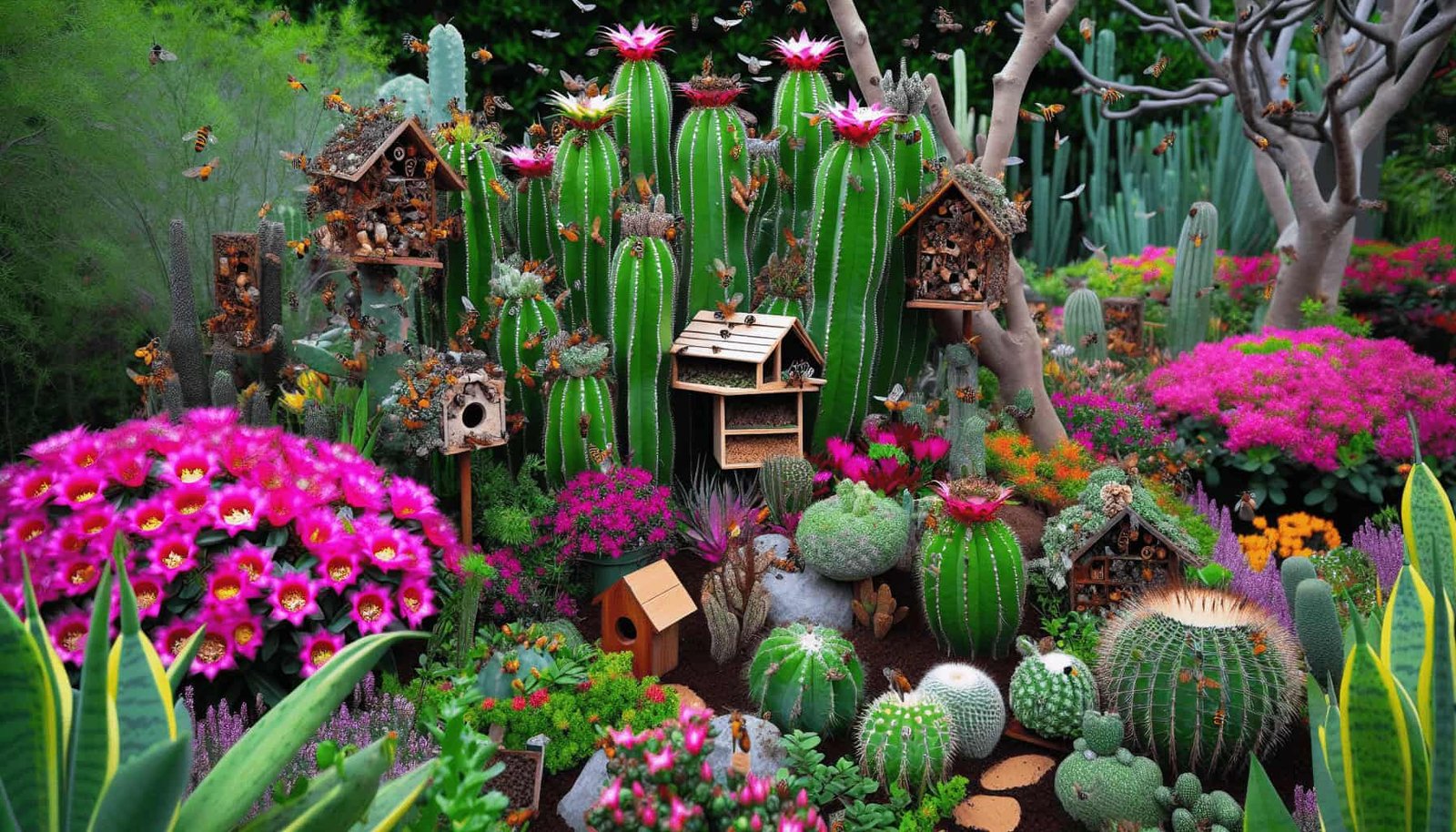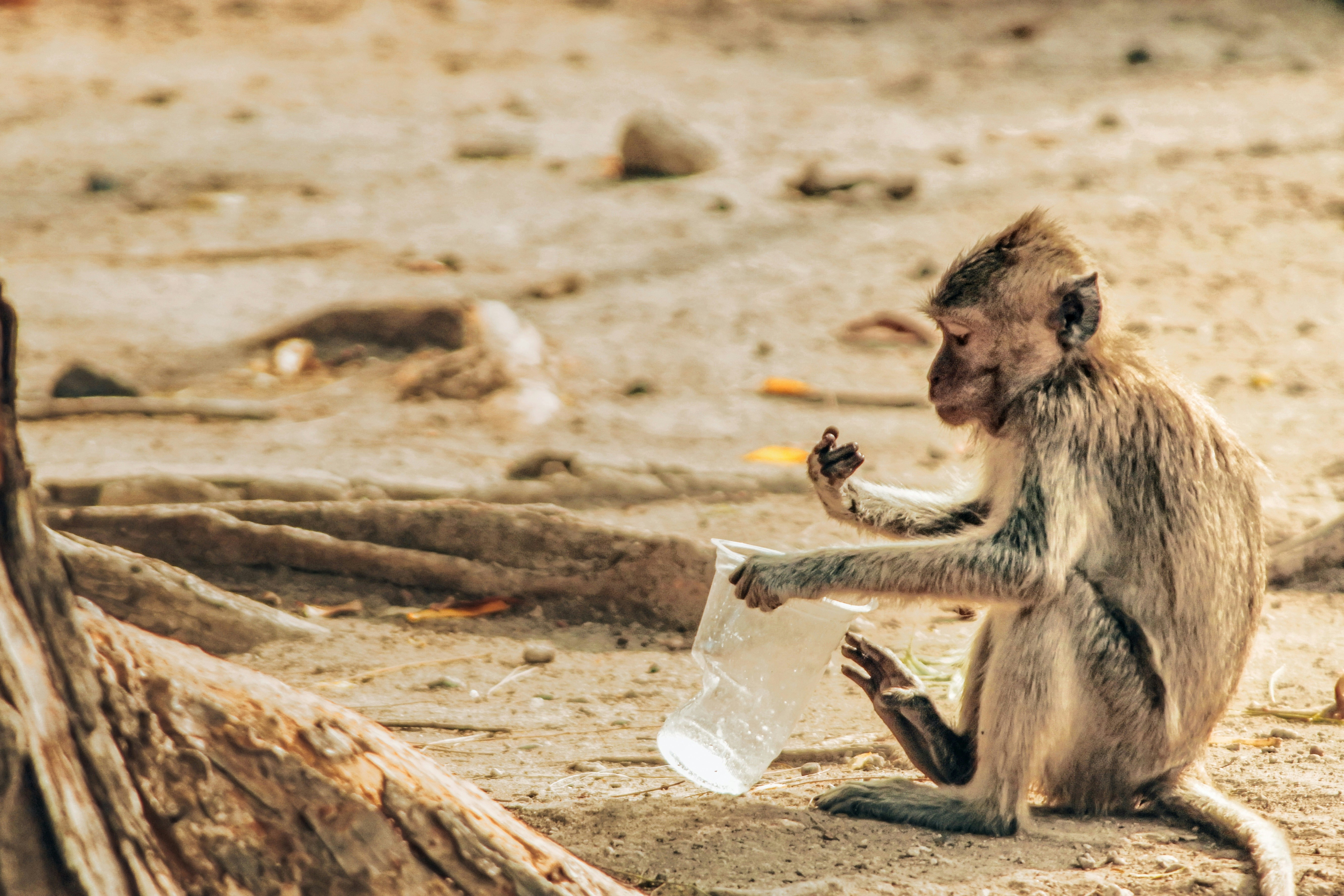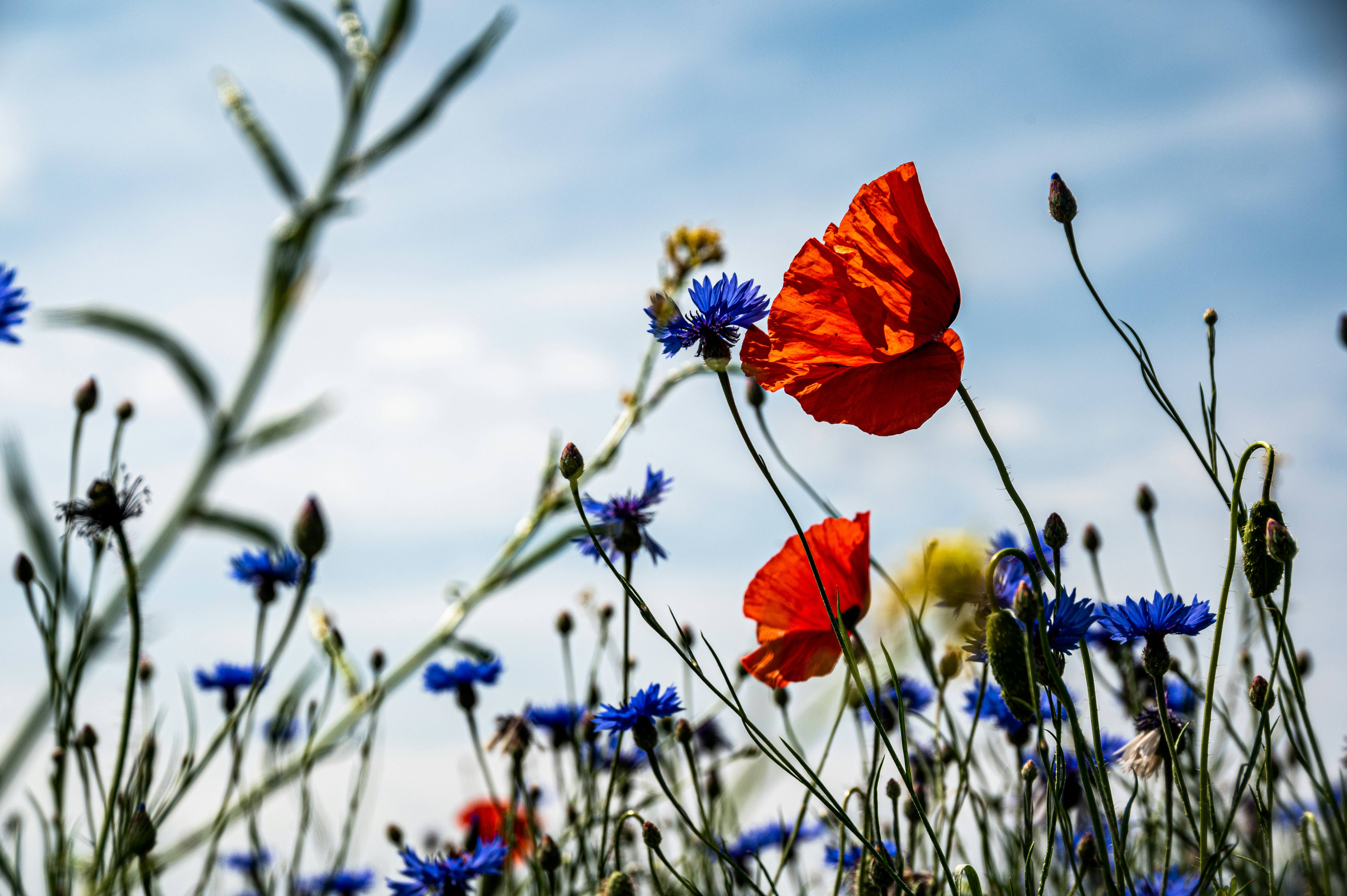In this article, you will discover simple yet effective ways to promote biodiversity in your nopal garden. From embracing native plants to creating habitats for local wildlife, we will explore various techniques that can transform your garden into a thriving ecosystem. By implementing these practices, you not only contribute to the preservation of biodiversity but also create a beautiful and sustainable environment for both plants and animals to thrive. So, if you’re ready to enhance the natural diversity of your nopal garden, let’s get started!
Understanding Biodiversity
Definition of Biodiversity
Biodiversity refers to the variety of living organisms present within a particular ecosystem. It includes the diversity of species, genetic variation within those species, and the variety of ecosystems in which these species exist. Biodiversity encompasses plants, animals, microorganisms, and even the intricate ecological interactions among them.
Importance of Biodiversity
Biodiversity is crucial for the health and functioning of ecosystems. It provides numerous benefits, such as supporting ecosystem services like pollination, nutrient cycling, and pest control. Biodiversity also contributes to the stability and resilience of ecosystems, making them better able to withstand environmental changes. Moreover, it enhances the aesthetic beauty and cultural significance of our surroundings.
Benefits of Promoting Biodiversity in a Nopal Garden
Promoting biodiversity in your nopal garden offers several advantages. First, it creates a vibrant and dynamic ecosystem that sustains a wide array of plants and animals. This diversity can attract beneficial insects, birds, and other wildlife, contributing to natural pest control and pollination. Additionally, a biodiverse nopal garden is more resilient to pests, diseases, and climate variations, ensuring the robust health of your plants. Finally, by promoting biodiversity, you are actively contributing to the preservation of native plants and the restoration of local ecosystems.
Choosing Native Nopal Species
Researching Native Nopal Species
Before selecting nopal species for your garden, it’s essential to do thorough research on the native nopal species in your region. Explore botanical databases, consult local gardening resources, or reach out to native plant nurseries for guidance. Understand the growth requirements, adaptability, and specific ecosystem roles of different nopal species to make informed choices that align with your garden’s biodiversity goals.
Selecting Suitable Nopal Species for Your Region
Once you have gathered information on native nopal species, take into account your specific environmental conditions such as climate, sunlight exposure, and soil type. Choose nopal species that naturally occur in your region and are well-suited to thrive in your garden’s conditions. By selecting suitable native nopal species, you ensure their successful establishment and long-term survival while supporting the overall biodiversity of your garden.
Creating a Diverse Growing Environment
Integrating Different Nopal Varieties
To promote biodiversity within your nopal garden, consider integrating different nopal varieties. Varied morphological traits, growth patterns, and nutritional profiles among nopal species foster a more diverse and resilient ecosystem. Planting a mix of prickly and smooth varieties, as well as various colored pads and fruits, not only enhances the visual appeal but also provides a broader range of habitats and resources for wildlife.
Companion Planting with Nopales
Companion planting involves growing plants that benefit each other by providing mutual support. When it comes to nopales, consider companion planting with other compatible plants. Suitable companions include Aloe vera, which helps repel pests, or culinary herbs like cilantro and mint that attract beneficial insects and pollinators. These companion plants contribute to the overall biodiversity of your nopal garden while providing additional resources for wildlife.
Incorporating Wildflowers and Native Plants
Integrating wildflowers and native plants within your nopal garden is an excellent way to bolster biodiversity. Native wildflowers attract a diverse range of pollinators and insects, enhancing the ecological services they provide. These plants also offer food sources and habitats for birds, butterflies, and other native wildlife. By including a mix of wildflowers and other native plants, you create a more biodiverse and balanced ecosystem within your nopal garden.
Providing Shelter and Habitat
Building Nopal Pads and Rock Piles
Creating nopal pads and rock piles within your garden provides valuable shelter and habitat for a variety of organisms. When a nopal pad is pruned, consider leaving some sections on the ground as habitat for ground-dwelling insects, spiders, and small mammals. Likewise, constructing rock piles using stones of varying sizes creates crevices and dens for beneficial insects, lizards, and even small mammals. These features offer safe resting places and potential nesting sites, contributing to the overall biodiversity of your garden.
Creating Brush Piles and Log Stacks
Brush piles and log stacks serve as natural habitats and shelters for an assortment of wildlife. By collecting branches, twigs, and leaves, you can create a brush pile in a secluded corner of your garden. This provides refuge for insects, reptiles, and small mammals seeking cover or nesting spaces. Similarly, log stacks mimic fallen trees and attract a range of organisms, including fungi, insects, and even small mammals. These organic structures add complexity and biodiversity to your nopal garden.
Installing Nesting Boxes and Insect Hotels
To further encourage biodiversity, consider installing nesting boxes and insect hotels within your nopal garden. Nesting boxes provide nesting sites for birds like sparrows and wrens, while insect hotels offer shelter for beneficial insects such as solitary bees, ladybugs, and lacewings. These structures provide safe havens for wildlife to reproduce and take shelter, playing a vital role in maintaining biodiversity within your garden.
Maintaining Soil Health
Using Organic Fertilizers and Amendments
To maintain the health of your nopal garden and promote biodiversity, opt for organic fertilizers and amendments. Organic fertilizers, such as compost or well-decomposed manure, enrich the soil with essential nutrients while improving its structure and water-holding capacity. Additionally, amendments like organic matter or biochar enhance soil microbial activity and contribute to a more diverse soil ecosystem, supporting the growth of healthy nopal plants and a wider range of soil-dwelling organisms.
Mulching and Composting
Mulching and composting are essential practices for conserving soil moisture, controlling weeds, and promoting nutrient cycling. Use organic mulch, such as straw or wood chips, around your nopal plants to retain moisture, regulate soil temperature, and suppress weed growth. Composting kitchen scraps, garden waste, and fallen nopal pads can provide nutrient-rich compost to nourish your plants and enhance soil biodiversity. Healthy soils, teeming with diverse microorganisms, contribute to overall garden biodiversity.
Avoiding Chemical Pesticides and Herbicides
To safeguard biodiversity and minimize harm to beneficial organisms, it is crucial to avoid using chemical pesticides and herbicides in your nopal garden. These synthetic chemicals can disrupt the delicate ecological balance by harming beneficial insects, soil organisms, and even nopal plants themselves. Instead, embrace organic pest control methods like hand-picking pests, introducing predator insects, or using non-toxic insecticidal soaps. This approach reduces harm to biodiversity while still maintaining a healthy nopal garden.
Water Conservation
Implementing Drip Irrigation Systems
Water conservation is vital for both sustainable gardening and biodiversity promotion. Implementing drip irrigation systems in your nopal garden helps deliver water directly to the root zone, reducing wastage due to evaporation and surface runoff. By providing water efficiently, you can ensure that your nopal plants receive the necessary moisture while conserving water resources and supporting biodiversity in drier regions.
Collecting and Reusing Rainwater
Another effective water conservation strategy is collecting and reusing rainwater. Install rain barrels or larger rainwater harvesting systems to capture rainfall from rooftops and other surfaces. This collected water can then be used to hydrate your nopal plants during drier periods. By reducing your reliance on municipal water supplies or groundwater, you contribute to water conservation efforts and promote the overall sustainability of your nopal garden.
Reducing Water Usage by Proper Irrigation Techniques
In addition to drip irrigation and rainwater collection, adopting proper irrigation techniques helps minimize water usage. Water your nopal plants during the cooler parts of the day to reduce evaporation. Adjust the watering schedule based on weather conditions and plant needs, avoiding overwatering. Regularly monitor the moisture level of the soil to ensure optimal hydration without waterlogging. These practices conserve water resources while supporting healthy nopal growth and biodiversity.
Attracting Beneficial Wildlife
Planting Native Bushes and Trees
One effective way to attract beneficial wildlife to your nopal garden is by planting native bushes and trees. Native species provide familiar habitats and food sources for local wildlife, encouraging their presence and contributing to biodiversity. Choose plants that produce fruits, berries, or nectar-rich flowers, as these are particularly appealing to birds, butterflies, and other pollinators. By incorporating native bushes and trees, you create an ecosystem that supports a wide range of beneficial wildlife.
Creating Water Features
Water features, such as small ponds or birdbaths, are excellent for attracting wildlife and promoting biodiversity in your nopal garden. Birds, insects, and amphibians rely on water sources for drinking, bathing, and reproduction. Make sure to maintain these water features regularly, keeping the water clean and fresh. By providing a dependable water source, you create an inviting habitat that encourages biodiversity and enhances the ecological balance of your garden.
Providing Food Sources through Flowering Plants
Flowering plants play a crucial role in attracting beneficial wildlife to your nopal garden. Choose a variety of flowering plants that bloom at different times throughout the year to provide a continuous food source for pollinators and other insects. Native plants are particularly effective in attracting local wildlife, as they have adapted to the region’s ecological conditions. By incorporating a diverse range of flowering plants, you support the nutritional needs of beneficial insects, birds, and other wildlife, fostering biodiversity within your garden.
Avoiding Harmful Practices
Limiting or Avoiding Chemical Usage
Minimizing or altogether avoiding the use of synthetic chemicals is essential for preserving biodiversity in your nopal garden. Chemical fertilizers, pesticides, and herbicides can harm beneficial organisms, disrupt ecological interactions, and negatively impact biodiversity. Instead, focus on organic and sustainable gardening practices that prioritize the health and well-being of your nopal plants and the surrounding environment. By limiting chemical usage, you contribute to a more balanced and biodiverse ecosystem.
Preventing Soil Erosion
Soil erosion not only leads to the loss of valuable topsoil but also has detrimental effects on biodiversity. To prevent erosion in your nopal garden, employ erosion control measures such as mulching, terracing, or retaining walls. These practices help stabilize the soil, reducing runoff and erosion. By preserving the integrity of the soil, you create a more favorable environment for nopal plants and the multitude of organisms that rely on the soil ecosystem for their survival.
Avoiding Over-harvesting Nopal Pads or Fruits
While it may be tempting to harvest nopal pads and fruits from your garden, it’s crucial to do so in a sustainable manner. Avoid over-harvesting, which can deplete the resources available to native wildlife. Allow some nopal pads and fruits to mature and serve as food sources for birds, insects, and other animals. By practicing responsible harvesting, you ensure the long-term sustainability of your nopal garden and its contribution to biodiversity.

Educating and Engaging Others
Sharing Knowledge with Neighbors and Community
Share your knowledge and experiences of promoting biodiversity in your nopal garden with your neighbors and the wider community. Engage in conversations about the importance of biodiversity and encourage others to incorporate biodiversity-friendly practices in their own gardens. By fostering a sense of collective responsibility, you can create a network of individuals committed to preserving and promoting biodiversity.
Organizing Workshops and Events
Organize workshops and events in collaboration with local community organizations, schools, or gardening clubs to educate and inspire others about biodiversity. These events could cover topics such as native plant selection, organic gardening methods, or the establishment of wildlife habitats. By providing hands-on learning experiences and opportunities for discussion, you empower others to make a positive impact on biodiversity in their own gardens and communities.
Promoting Nopal Conservation and Biodiversity
Advocate for the conservation and protection of nopal species in your region. Collaborate with conservation organizations or undertake projects to preserve and restore native nopal habitats. By actively promoting the conservation of these plants and their ecological importance, you contribute to broader biodiversity conservation efforts. Encourage others to recognize the value of nopal gardens and their potential for supporting local biodiversity.
Monitoring and Evaluating Biodiversity
Recording and Identifying Nopal Flora and Fauna
Regular monitoring and documentation of the flora and fauna in your nopal garden can provide valuable insights into changes in biodiversity. Keep records of the nopal species present, as well as the insects, birds, butterflies, and other wildlife visiting your garden. This information helps track fluctuations in biodiversity levels and aids in identifying any invasive species that may be impacting the ecosystem.
Assessing Changes in Biodiversity Over Time
Periodically assess changes in biodiversity over time to measure the success of your efforts in promoting biodiversity in your nopal garden. Monitor the abundance and diversity of plant and animal species present, paying attention to any shifts in population numbers or the introduction of new species. By evaluating these changes, you can make informed decisions to further enhance the biodiversity of your garden.
Documenting Successes and Challenges
Keep a record of the successes and challenges encountered in your journey towards promoting biodiversity in your nopal garden. Document successful strategies, such as companion planting techniques that attracted beneficial insects or native plant choices that supported local wildlife. Equally important, note any challenges faced, such as pest outbreaks or soil issues. This documentation can serve as a valuable resource for yourself and others interested in promoting biodiversity in their own gardens.
By following these comprehensive guidelines and incorporating biodiversity-friendly practices into your nopal garden, you can create an environment that supports a diverse array of plants, animals, and other organisms. Your efforts will contribute to the conservation of native nopal species and the preservation of local ecosystems, ensuring a beautiful and thriving garden that embraces the richness of biodiversity.




